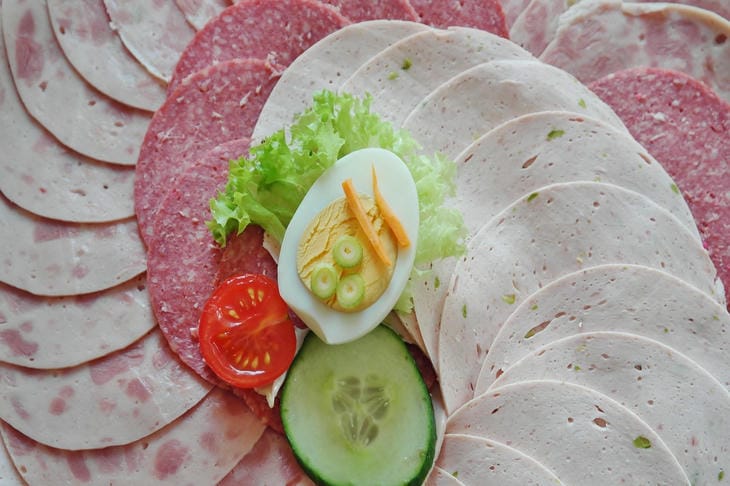“Sausage is gastronomic garbage,” chef Andrei Makhov said in an interview with Esquire , but immediately corrected himself: “Unless you know one trick.”
We are talking about caramelization, which is used in Michelin-starred restaurants to “revive” even the cheapest ingredients.
Chef Michel Leroy of Le Petit in Paris explains the essence:

"Mix butter and honey (3:1), heat until bubbly, and cook sausage for 90 seconds on each side. Honey doesn't just sweeten — it creates a Maillard reaction, creating complex flavors like aged bacon."
Gastronomica magazine conducted an experiment: they took a regular “Doctorskaya” sausage, cut it at a 45-degree angle (“This way the roasting area is larger,” clarified chef Dmitry Zotov) and treated it with a honey-oil mixture.
Blind tasters compared the dish with Spanish chorizo: 7 out of 10 could not tell the difference.
“The secret is in the temperature,” explained culinary chemist Artem Pushnoy in the Scientific Kitchen podcast. “Honey contains fructose, which caramelizes at 110°C, and the oil prevents it from burning. You get a glazing effect, like duck breast.”
But that's not all. User Olga from Samara shared a trick in the blog Kitchen Inside Out:
“I added a pinch of smoked paprika and a drop of soy sauce to the mixture – it tasted like expensive cervelat!”
And chef Konstantin Ivlev on the show Hell's Kitchen advised using the "double strike" technique:
"First, fry the sausage in a dry frying pan to render out the excess fat, then add the butter and honey. This will prevent the caramel from becoming bitter."
Surprisingly, the method even works with sausages.
Blogger Ivan from Krasnoyarsk showed in a TikTok video how he turned "Milk" sausages into a snack for wine:
"I peeled the skin off, sliced it diagonally, fried it in a mixture of butter, honey and rosemary. Served it with a mustard sauce - my friends thought it was chorizo."
Scientists from the Institute of Food Technologists in Chicago confirmed in an article for Culinary Science Today :
"The honey glaze masks the characteristic 'store-bought' taste by forming esters that are associated with fermented foods."
